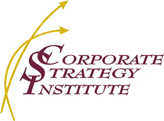
Growth Strategies: Getting the Right People Part #4
This is the fourth in a series of posts on Growth Strategies: How to get the right mix of people to grow your company. So far we have covered questions about technical expertise, culture and the most significant aspect of the resume. In this our last blog in the series, we cover employees that don’t keep up with the times and other miscellaneous thoughts our experts share.
Our experts for this blog include:
Kathy Boyd – VP Sales and Marketing, EADs, Global leader in defense and aerospace
Robert Newland – President & CEO, Newland Associates, an MBE Certified CPI Partner, providing Recruitment & Talent Management Solutions
Kristie Svetics, SPHR – Central Florida HR Manager, Regions Bank, Personal banking solutions that simplify your life.
Ashley Allen – Principal, Acacia Insights, Providing Consulting, Team Development and Coaching.
This week, our experts are responding to the question:
When you have employees that have not evolved with the times in the organization, how do you determine whether to eliminate them or try to get them re-aligned?
Kathy Boyd works with her HR department to do an assessment on whether it is a training/coaching issue or a capability issue. Though she believes that employees own the responsibility to keep themselves competitive internally and externally, there are times that they have not been afforded the opportunity to get the training required. Giving them that opportunity can provide what they need to be successful in their roles within the organization. If they have been a good employee and you want to retain them that should be your first option. If they are not demonstrating willingness to learn or the commitment to grow with the organization, they should be considered for performance managing out of the organization. At some point if an employee doesn’t have the capability even after training and coaching, they will need to be performance managed out of the position into a more suitable position or out of the company.
Kristie Svetics recommends starting with clear expectations of how the job requirements will be changing and in what time frame. Asking employees what they need to be successful in the role if they are not performing is the next best step so the company can provide the employee with the tools and support needed. Lastly, honest feedback about performance along the way is key. When this process is carried out with professionalism and respect, employees who continue to struggle will self-select and either seek another alternative in the company or resign on their own accord.
Robert Newland believes the first thing to do is to ask “what have I done as a leader to ensure people evolve with the organization?” This introspection is important to ensure you are not letting good people go because you are not doing your job. However, there is always a small segment that may not be willing to keep up. In that case, you may first use one-on-one coaching to promote change. If not successful, then by all means do all you can to make sure the lagers get a job working for your competitor!
We also asked our experts: Is there is anything else they would like to offer regarding how executives can ensure the right mix of people to lead the organization forward?
Robert Newland feels that leaders need to be, first and foremost, excellent at leading people. Make sure you hire and develop people with true leadership potential. We have a saying when conducting executive search: can you do the job, will you do the job, and more importantly, will we get along while you do the job. In other words, team chemistry matters a lot!
Kathy Boyd said that diversity in the broadest sense is valuable to a high performance team. Looking for diversity in experience, age, gender, culture and backgrounds can provide a richer environment for decision making, problem solving and reaching financial goals. Alignment to the company values and objectives are a critical factor in getting the right mix of people.
Kristie Svetics indicated that it’s important to understand what element might be missing in the organization and then execute a strategy to find someone who has those elements/skills. Defining what you need up front is critical before you bring a new person on board. It’s also good to realize that you don’t necessarily want to look for someone who exactly mirrors you. Complementing skill sets is paramount in building a well-rounded and high performing team.
Ashley Allen thinks it is important to know where you want to go. It sounds simple, but it’s where even seasoned leaders slip up. Whether it’s an organization’s comprehensive strategic plan or a simple short-term project, be crystal clear on the expected goal or outcome. Only then can you determine the specific skills and talents needed to achieve it.
Assess, document and discuss your team members’ diverse strengths and insist those differences be leveraged.
Are you prepared to Grow in 2014? For a free 30 minute phone consultation (not a sales pitch) to help move you along the growth path, email Dr. Sarah Layton info@corporatestrategy.com for an appointment. Dr. Sarah Layton CMC, FIMC is the CEO and Managing Partner of Corporate Strategy Institute. CSI’s focus is on helping organizations grow, increase their value (EBITDA) and find new markets.




















No Comments Yet
You can be the first to comment!